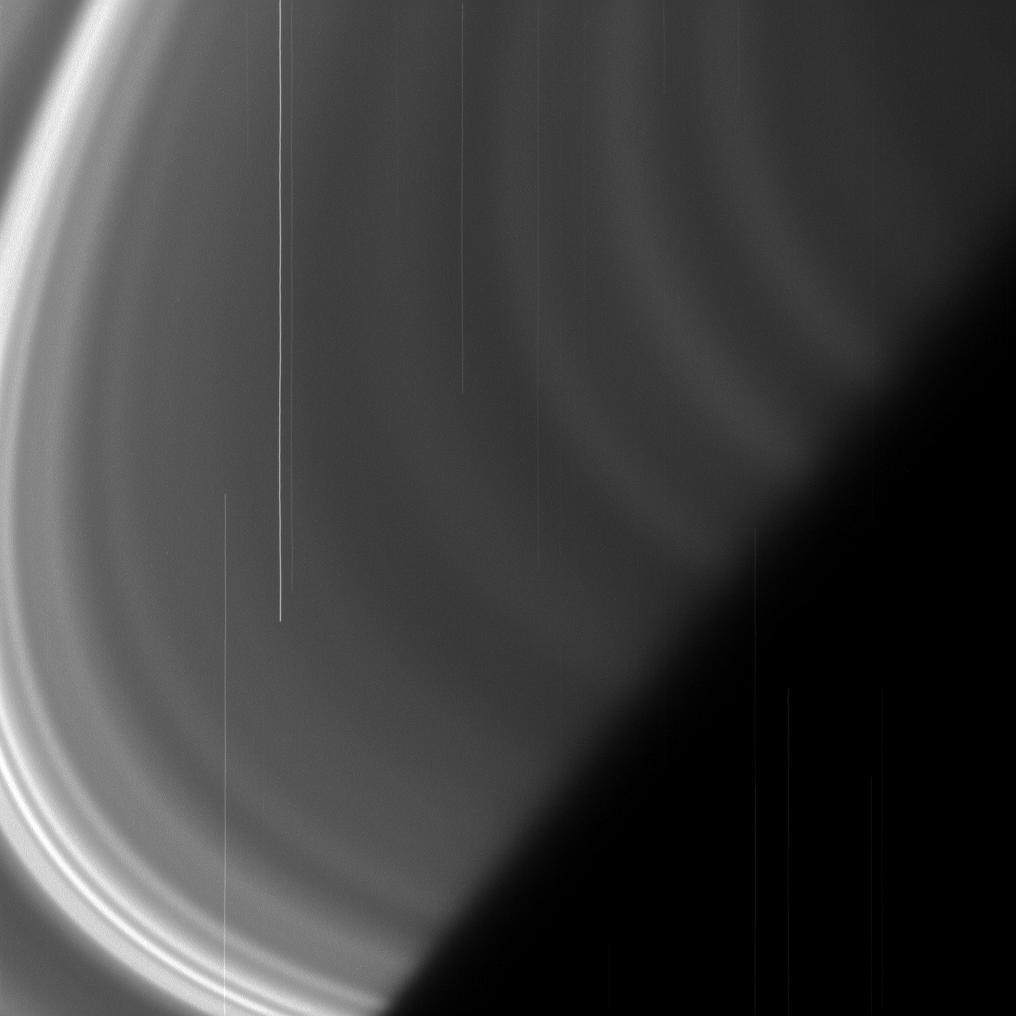A Long, Hard Stare

| PIA Number | PIA14664 |
|---|---|
| Language |
|
Saturn's D ring may be faint and difficult to observe, but it rewards our patience. In this image, the Cassini spacecraft has captured some of the structure of the tenuous ring, appearing here as light/dark banding in the upper-right of the image. (The brightest ring material, in the lower-left here, is the C ring.) This banding, which is distinct from the vertical warping pattern Cassini scientists are monitoring (see A Twisted Tale), remains something of a mystery to scientists.
The vertical lines in this image are the tracks of stars. The D ring is so faint that long exposures are required to capture it and during the imaging the stars appear to move significantly due to the spacecraft's motion.
This view looks toward the sunlit side of the rings from about 8 degrees above the ringplane. The image was taken in visible light with the Cassini spacecraft narrow-angle camera on April 2, 2013.
The view was acquired at a distance of approximately 317,000 miles (510,000 kilometers) from Saturn and at a Sun-Saturn-spacecraft, or phase, angle of 147 degrees. Image scale is 2 miles (3 kilometers) per pixel.
The Cassini-Huygens mission is a cooperative project of NASA, the European Space Agency and the Italian Space Agency. The Jet Propulsion Laboratory, a division of the California Institute of Technology in Pasadena, manages the mission for NASA's Science Mission Directorate in Washington. The Cassini orbiter and its two onboard cameras were designed, developed and assembled at JPL. The imaging team is based at the Space Science Institute, Boulder, Colo.
For more information about the Cassini-Huygens mission visit http://saturn.jpl.nasa.gov or http://www.nasa.gov/cassini . The Cassini imaging team homepage is at http://ciclops.org .
Credit: NASA/JPL-Caltech/Space Science Institute
